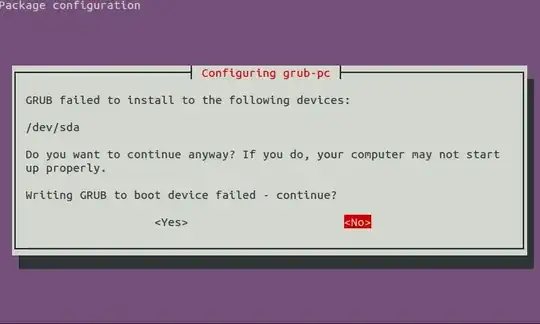I'm trying to install Ubuntu to my Dell XPS. I have an existing Windows 10 install on it, which I'd prefer not to loose. I have an empty partition of about 400 Gb. However, Grub keeps failing to install. Also, the bootloader is appearantly broken now, as I can't boot from the hard disk at all at the moment.
What's I've done so far:
- I originally tried to install Ubuntu 16. It would always fail on the Grub install. After getting the error message and prompt with 3 options on how to proceed, the installer would crash. I read that Ubuntu 14 might get me around the issue.
- I booted from a Ubuntu 14 disk, and set it up to install Ubuntu 14 to the same partition that I had attempted to install Ubuntu 16 to. Grub still failed to install with the same error message. But, the installer didn't crash this time.
- I rebooted the machine from the Ubuntu 14 disk, loaded Ubuntu in live mode and ran boot-repair. It gave me several commands to run, but it still fails when it attempts to install Grub.
The error message I get now is:
Also, on the command line I saw these messages:
Installing for i386-pc platform.
grub-install: warning: attempt to read or write outside of disk `hostdisk//dev/sda'.
grub-install: error: embedding is not possible, but this is required for cross-disk install.
Boot-repair generated this diagnostics report: http://paste.ubuntu.com/23450135/
